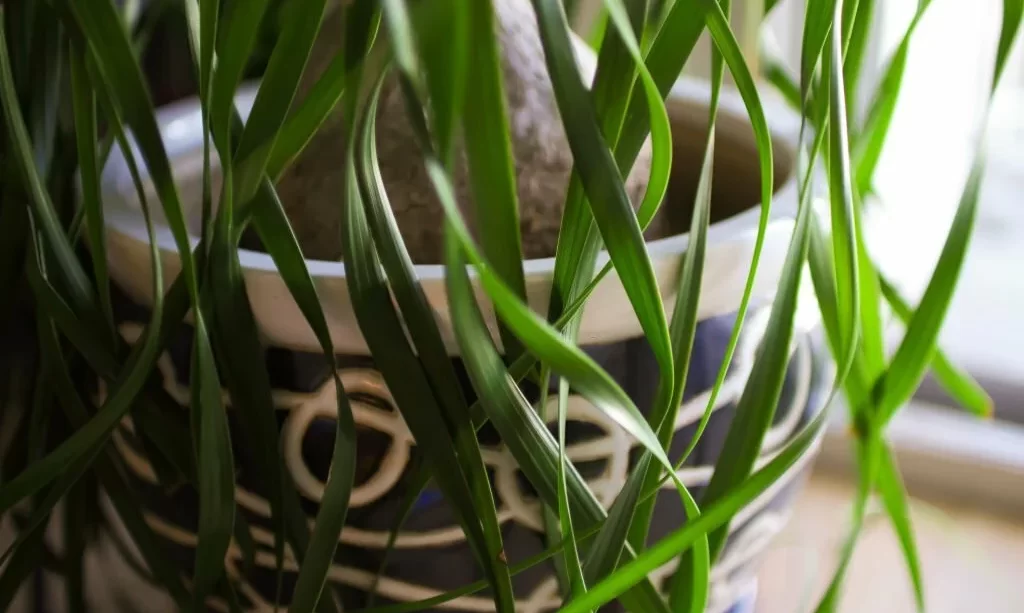Welcome to the world of Ponytail Palms, a delightful addition to any indoor garden. Known for their unique appearance and easygoing nature, these plants have captivated gardening enthusiasts. If you’re eager to see your Ponytail Palm reach new heights, you’re in the right place. In this guide, we’ll walk you through essential steps to foster vertical growth and ensure your Ponytail Palm becomes a stunning focal point in your green oasis.
Selecting the Right Pot
The foundation for a tall and thriving Ponytail Palm begins with the right pot. Opt for a container that allows proper drainage, preventing waterlogged soil. A pot with ample depth accommodates the plant’s growing roots, providing stability and support. So, when shopping for the perfect pot, think deep and well-draining to set the stage for your Ponytail Palm’s upward journey.
Soil Mix
Just as a healthy diet is crucial for our well-being, the right soil mix is vital for your Ponytail Palm’s growth. Choose a well-aerated blend that promotes drainage, preventing root rot. Consider adding perlite or sand to enhance aeration. This ensures that your Ponytail Palm’s roots have the perfect environment to explore, fostering a strong foundation for upward growth. So, let’s get our hands dirty and create a soil mix that propels your plant skyward.
- 100% NATURAL: No additives or chemicals, ideal for potted palms, starting, repotting, or amending soil
- USES: For successfully growing many types of palm plants and trees such as Sago Palms, Pygmy Date Palms, Ponytail Palms, Majesty Palms, Cat Palms, Parlor Palms, and Fan Palms.
- BENEFITS: drainage, aeration and nutrient retention
- Ingredients: Peat moss, pumice, horticultural perlite and lime
- Size: 8 quarts (enough for a big 12-inch pot)
Sunlight Requirements
Every green thumb knows that sunlight is the secret ingredient for a flourishing indoor garden. Ponytail Palms thrive in bright, indirect sunlight. Position your plant where it can bask in the glow of at least six hours of light daily. Remember to rotate your Ponytail Palm occasionally, ensuring that every side receives its fair share of sunshine. So, let the sun be the guiding force in steering your Ponytail Palm toward the heights of its full potential.
Watering Tips
When it comes to watering your Ponytail Palm, less is often more. These plants are champions of drought tolerance, and overwatering can be their Achilles’ heel. Allow the soil to dry out between watering sessions, and always check the moisture level before reaching for the watering can. Remember, it’s okay to let your Ponytail Palm experience a dry spell. This mindful approach to watering ensures that your plant’s roots stay healthy, preventing the risk of root rot and contributing to its upward growth.
Temperature Considerations
Ponytail Palms are creatures of comfort, preferring warmer temperatures. Keep your plant cozy and shielded from cold drafts or extreme temperature fluctuations. While they can handle a variety of conditions, providing a stable and warm environment encourages steady growth. If winter brings a chill to your indoor space, consider relocating your Ponytail Palm to a warmer spot. By maintaining the right temperature, you’re setting the stage for your plant to gracefully reach for the sky.
Fertilizing Routine
Just like we need our nutrients, so does your Ponytail Palm. Introduce a balanced, diluted fertilizer designed for succulents into your routine. During the growing season, typically spring and summer, feed your plant every two months. Moderation is key – avoid over-fertilizing, as this can lead to more harm than good. A well-balanced diet will nourish your Ponytail Palm, providing the essential nutrients it needs to grow taller and more robust. So, let’s fertilize wisely and watch your plant thrive.
- New Liquid Fertilizer for: Beaucarnea (Ponytail Palm, Elephant’s Foot Tree)
- This food for plants belongs to the latest generation of fertilizers, for healthy and bright green leaves, stable branches, strong bud formation, balanced rooting.
- Very rapid effects, can be administered via the roots and as a foliar fertilizer. For 60-125 liters of ready to use liquid fertilizer
- Content: 250 ml, works as an economical concentrate. Simple dosage with the help of the cap.
- The fertilizers from the GREEN24 PROFI LINE were developed by gardeners of various departments and were evolved and produced based on the current knowledge in the field of propagation and cultivation of plants.
Pruning Techniques
Pruning plays a pivotal role in shaping a Ponytail Palm’s growth. To encourage vertical development, focus on removing dead or damaged leaves. Additionally, consider trimming the top to promote a more upright appearance. Pruning not only enhances the plant’s aesthetic but also redirects energy towards upward growth. Keep your pruning shears handy, and with a gentle touch, guide your Ponytail Palm towards a taller and more elegant stature.
Supporting the Stem
As your Ponytail Palm reaches for the sky, it might need a little support along the way. If you notice a lean or top-heavy growth, consider staking the stem. Use stakes that are sturdy yet gentle on the plant, securing them carefully to avoid damage. This simple technique provides the necessary reinforcement, ensuring that your Ponytail Palm stands tall and proud. With proper support, you can witness your plant gracefully ascending to new heights.
Troubleshooting Common Issues
Even the most dedicated plant parents encounter challenges. If your Ponytail Palm faces hurdles like overwatering, pests, or diseases, fear not. Adjust your watering routine, keep a watchful eye for pests, and promptly address any issues that arise. Prevention is the best cure, so maintain a vigilant care routine to keep your Ponytail Palm on the path to growth. Troubleshooting common problems ensures that your plant’s journey to greater heights remains smooth and enjoyable.
Conclusion
Congratulations on embarking on the journey to cultivate a taller and more majestic Ponytail Palm. By selecting the right pot, nurturing the soil, providing ample sunlight, and mastering the art of watering, temperature control, and fertilizing, you’ve laid the groundwork for success. Through pruning, supporting the stem, and troubleshooting, you’ll guide your plant towards impressive heights. As your Ponytail Palm flourishes, so too will your sense of accomplishment. Enjoy the process, and revel in the beauty of a Ponytail Palm that stands tall, a testament to your green-thumb prowess.





